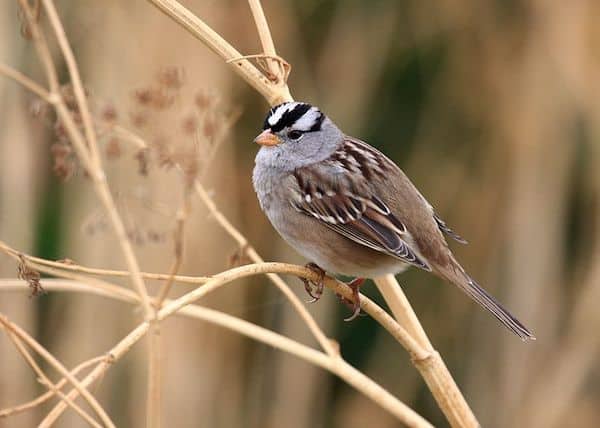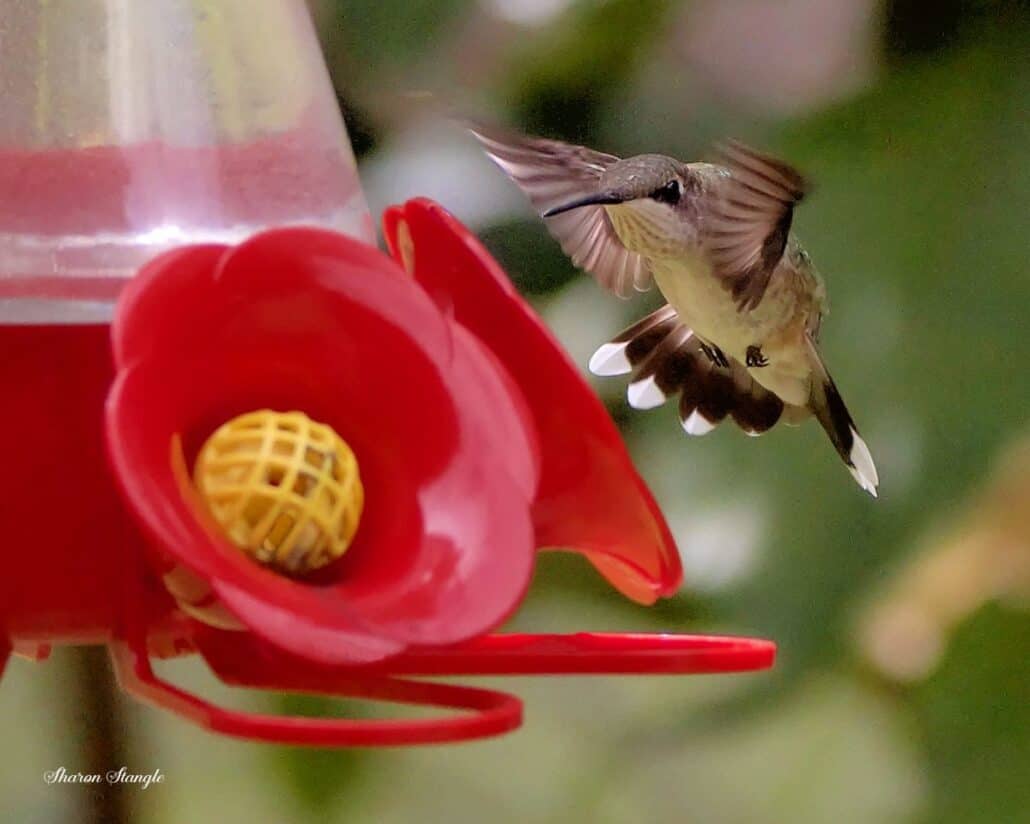Look For
The conk-a-ree call of the male red-winged blackbird fills the air over marshes and fields all across North America. As he gives this call, announcing himself loudly to rivals and potential mates alike, he spreads his shoulders just so, showing bright red and yellow epaulets against his black wings.
Redwings are medium-sized (8 ¾ inches long) blackbirds with an all-black body, an orange-red and yellow patch on the shoulder, and a nearly conical black bill. The red-winged blackbird’s name succinctly describes the male’s handsome plumage; yet, the females of this ubiquitous species have baffled many a bird watcher.
Their streaky brown plumage is confusingly sparrow-like. Females are streaky brown overall, but their longer bill helps separate them from the sparrows (which have stouter bills).
Listen for
The blackbird’s song is a harsh, rising conk-a-ree! Females give an explosive, sputtering call: bee-bee-bee-prrrrrttt! Flight call is chack! Alarm call of male is down-slurred tyeer!
Find it
Wet meadows, cattail marshes, upland grasslands, and pastures are all breeding habitat for red-winged blackbirds. In fall and winter, they may join with other blackbird species to form huge flocks. Northern nesting redwings migrate (starting in September and October) to the southern U.S., while southern nesting birds are non-migratory.
Fall blackbird flocks move during the day in oblong, loose clouds of birds. These flocks forage by day in agricultural fields and are often persecuted as a nuisance species for the crop damage they inflict. Spring migration begins in mid-February and continues through mid-May.
Feed it
The red-winged blackbird’s diet is mostly plant matter—weed seeds, grain, sunflower seeds, and tree seeds—along with some insects, all of which are gleaned from the ground. They will also visit feeding stations for sunflower seeds, cracked corn, peanuts, and suet. Surprisingly, they are able to use a variety of feeder types.
Nesting Behavior
Nesting starts early for the red-winged blackbird, with males singing from an exposed perch on their territories as early as February in the South, later in the North. Females choose a nest site on a male’s territory and build cup-shaped grass nests that are suspended from vertical supporting vegetation.
Mud forms the foundation of the nest and soft grasses are the inner lining. Clutch size is three to four eggs, and the female alone incubates them for 10 to 13 days. Both parents care for the nestlings for about two weeks, until they are ready to leave the nest.
WOW!
In parts of North America, the blackbird’s CONK-A-REE! is one of the first sounds of spring’s return. Males will begin singing on territory before the last snow has melted.
Hear the red-winged blackbird:




